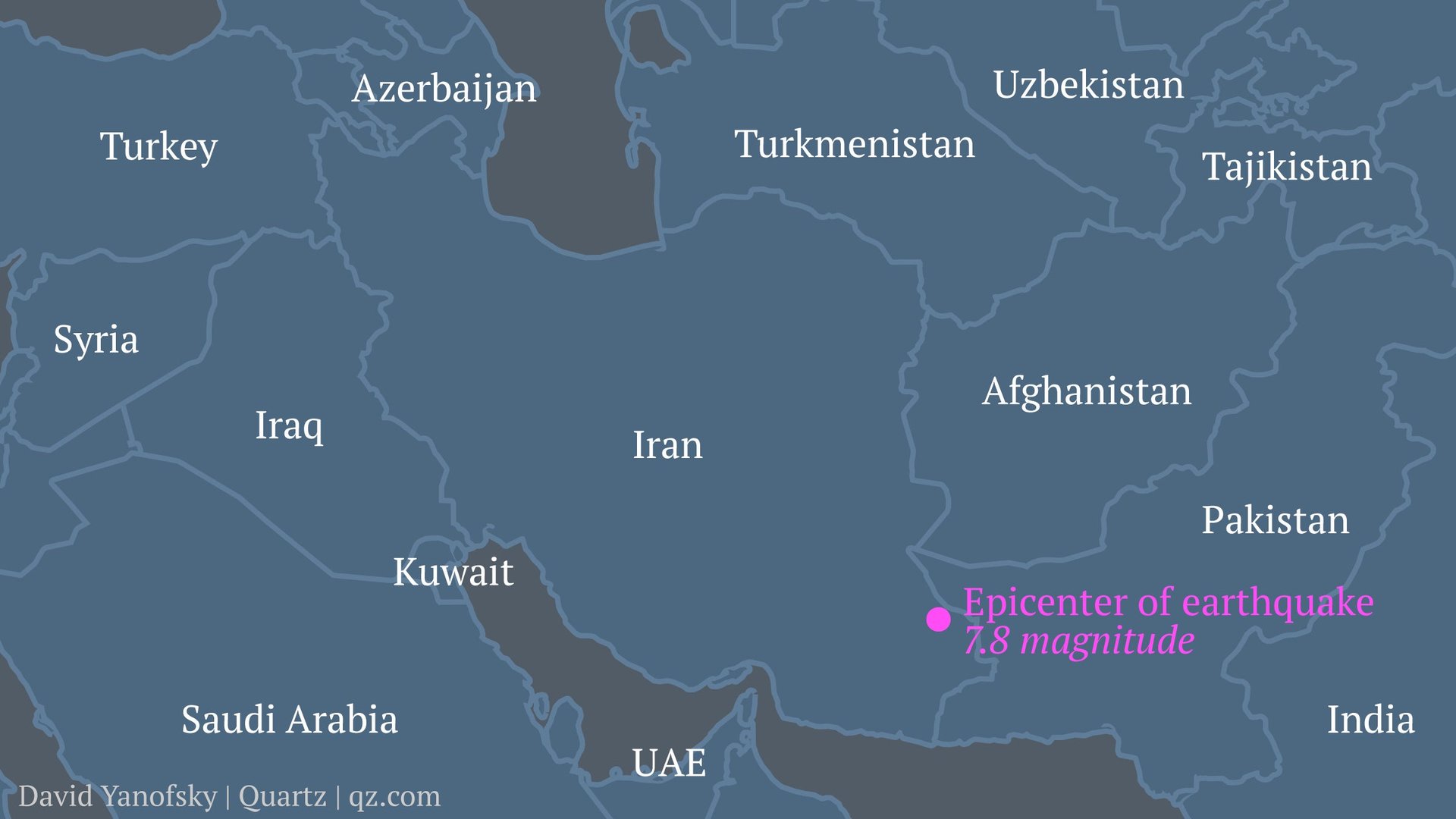Major casualties expected in 7.8-magnitude earthquake in southeastern Iran
A 7.8-magnitude earthquake that hit the Iranian provinces of Sistan and Baluchestan has reportedly killed 40 people (though early death toll estimates are often unreliable.) The epicenter of the quake, which followed a series of smaller earthquakes earlier in the day, was around 50 miles from Khash, though the quake was strong enough that it could be felt in New Delhi, India, more than 2,000 km away. Other nearby cities include the provincial capital, Zahedan, as well as Rudbar in Afghanistan, Turbat in Pakistan, and the capital of Oman, Muscat.


A 7.8-magnitude earthquake that hit the Iranian provinces of Sistan and Baluchestan has reportedly killed 40 people (though early death toll estimates are often unreliable.) The epicenter of the quake, which followed a series of smaller earthquakes earlier in the day, was around 50 miles from Khash, though the quake was strong enough that it could be felt in New Delhi, India, more than 2,000 km away. Other nearby cities include the provincial capital, Zahedan, as well as Rudbar in Afghanistan, Turbat in Pakistan, and the capital of Oman, Muscat.
An Iranian official told Reuters that casualty tolls would mount. “It was the biggest earthquake in Iran in 40 years and we are expecting hundreds of dead,” said the official, who spoke on condition of anonymity.
Iran sits on the tectonic intersection of four major continents—Eurasia, India, Africa and Arabia. And, as the US Geological Services explain, millennia of friction among these plates have shaped the rugged mountains of northern Pakistan and Afghanistan—and have also made Iran a center of frequent seismic havoc.
Just last week, a 6.3-magnitude earthquake in Iran’s southwest killed 37 and wounded 850. And a little over a decade ago, in December 2003, a 6.6-magnitude earthquake in Bam, an oasis city in southeastern Iran, killed more than 26,000 people (estimates vary), injuring 30,000. The majority of the deaths were due to the collapse of buildings constructed in the last 30 years.
However, Iran’s deadliest earthquake on record hit Gilan and Zanjan provinces, in the northwest of the country, in June of 1990. The 7.7-magnitude quake killed more than 40,000 people and injured more than 100,000.
That earthquake was thought to have caused $7.2 billion in economic loss, $2.8 billion related directly to reconstruction costs (pdf). Little has changed since then. Due to poor construction and no rigorous earthquake prevention efforts, Iran’s earthquakes tend to be incredibly destructive, often flattening the majority of buildings. The Bam earthquake cost Iran an estimated $1.9 billion in economic losses. A center for date, orange and eucalyptus cultivation, Bam’s agricultural sector alone suffered $53 million in losses, due to the implosion of wells and irrigation canals.
Like those of Bam, residents of Khash and the surrounding areas hit today typically live in mud-brick houses, which are prone to crumbling. As of 2006, Khash’s population was 162,000, while Zahedan’s was 553,000. Khash is home to several large cement factories. Zahedan, meanwhile, is the regional economic center; the area specializes in cotton textiles and agriculture.
The US Geological Survey says aftershocks should be expected.